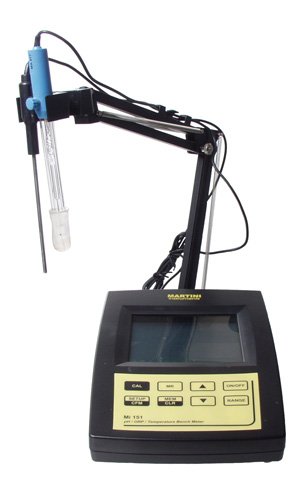I applaud you for trying fresh winegrapes in your home winemaking, you’re lucky that you are (relatively) close to a fine winegrape growing area like the Santa Ynez Valley. I grew up just down the California coast from there and one of my first harvests was at Curtis Winery in the area that at the time had its own estate vineyards containing Pinot Noir and Syrah. My current company grows many acres of Pinot Noir in Santa Barbara County and it continues to be one of my favorite grapes to work with.
The data you report for your Syrah is extremely typical. Syrah tends to come in quite high pH after MLF is complete, so your 3.55 to 3.73 shift is entirely normal. In fact, I’ve seen Syrahs with a 3.55 starting pH register in the 3.90s after MLF so 3.73 isn’t that high and is in fact quite a good number. Your situation with your initially acid-balanced Pinot Noir (pH of 3.35 at 24.5 °Brix), in contrast, is indeed a strange one.
Having a starting pH of 3.35 in Santa Barbara Pinot Noir is entirely normal. However, such a quick shift from 3.35 to a pH of 3.94 (indicating a large deacidification) is not. From a starting point of 3.35 I’d expect a pH of about 3.45 or so after primary fermentation and maybe 3.60–3.65 after MLF was complete.
First of all, because you had an uncontrolled feral fermentation, which dropped your Brix from 24.5 to 10.0, I’m sure that your wine went through primary fermentation (sugar converted to alcohol and carbon dioxide) and secondary fermentation (malic acid converted to lactic acid and carbon dioxide) simultaneously. There are many “wild” yeasts that can also metabolize malic acid (and you likely had some) so it’s entirely possible that by the time your primary fermentation was finished, technically so was your ML fermentation.

That by itself, however, isn’t quite enough to explain the precipitous acid drop in its entirety. I also suspect that your pH number of 3.35 reflected a high malic acid content, so that, naturally, when all of the malic acid was consumed, the pH shift reflected its absence and posted abnormally high. I’ve had this happen to me before; some vintages just seem to be “high malic” years (a function of climate and growing season) and some vineyards are also “high malic” vineyards, seeming to produce fruit with a higher than normal proportion of malic to tartaric and other acids. You could get a sense of this (if you buy this fruit again) by sending a juice sample to a lab for a pre-fermentation malic acid assay.
I’ve got another suspicion about your feral fermentation organisms. Volatile acidity (acetic acid) is also produced by yeast and bacteria during primary and secondary fermentation, contributing slightly to the total acidity (TA) and pH of finished wines. While some wild yeast species (and cultured species as well) produce acetic acid, some like Lachancea thermotolerans actually consume it. If one of your wild yeast strains was a voracious acetic acid-consumer, it’s possible that the normal amount of acetic acid produced during a fermentation (it varies widely but could be 0.15–0.50 g/L), which would help keep pH low, wouldn’t be present. It’s hard to correlate between pH and TA in such a buffered solution and complex situation but if I had to guess I wouldn’t be surprised if a complete disappearance of acetic acid could contribute to a pH shift upwards of 0.05–0.15 or so.
The minute you crush a grape, you’re putting any organism that happens to be on the skins in contact with all of that tasty, sugary juice and fermentative chaos is the inevitable result.
So long story short, I agree with you, I think that wild party the feral yeast threw in your grape bin really did shift some things around. In the future, to knock down the activity of these rogue yeasts, and to make sure that your yeast of choice conducts your fermentations in a predictable way, you may want to make sure the crushing winery adds around 30 ppm SO2 (total, not free) to your grapes. Keeping the grapes cold is also critical, as you’ve found when the A/C quit on you. I also do recommend not waiting so long between the crushing and inoculating. The minute you crush a grape, you’re putting any organism that happens to be on the skins in contact with all of that tasty, sugary juice and fermentative chaos is the inevitable result. A little bit of chaos in winemaking can be a good thing . . . but a little control is also advised.





